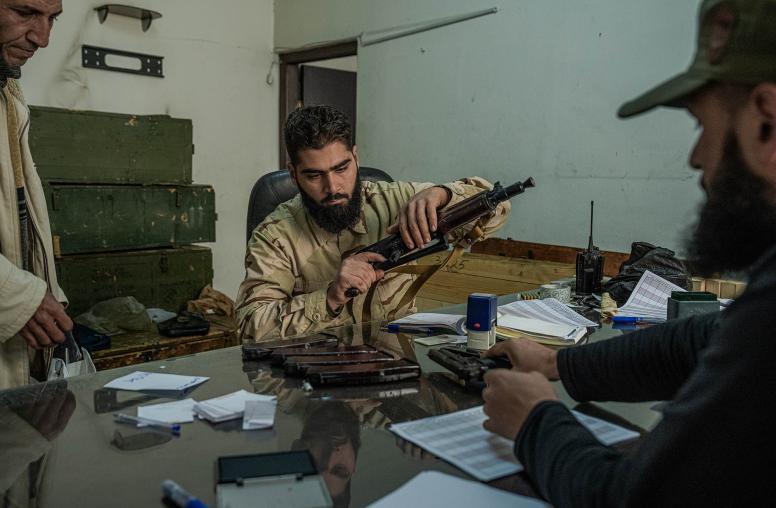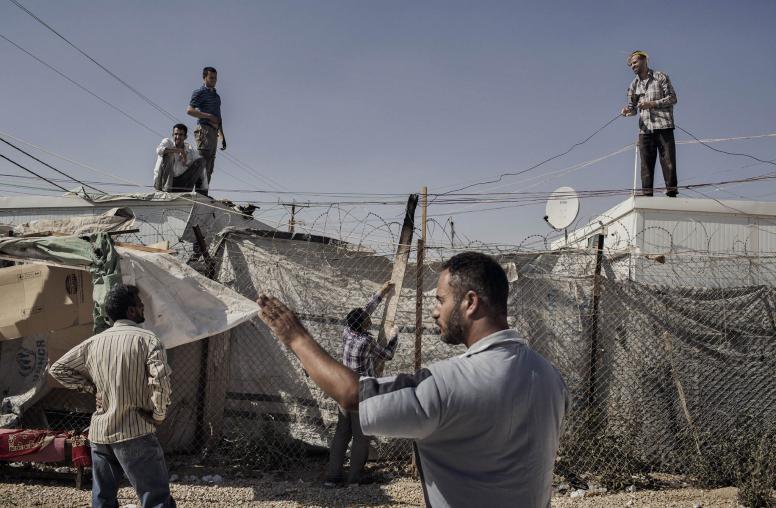The Syrian regime’s impending assault on Idlib, the last rebel-held enclave in Syria, could be among the bloodiest battles in Syria’s civil war with significant humanitarian and geopolitical consequences. The regime’s retaking of Idlib would mark a significant milestone in Bashar al-Assad’s campaign to re-establish his control over the war-torn country. While regime victory in this battle would not herald the end of conflict in Syria, it would deprive anti-Assad rebels of their last stronghold and likely be the last major battle in the Syrian civil war.

In many ways, Idlib is a microcosm of the Syrian conflict and its multi-faceted complexity. A multitude of armed Islamist factions vie for power on the ground. Regional patrons—in this case Turkey—are attempting to control these fractious groups and shape the outcome in Idlib. Russia and Iran are key power brokers who can determine both the timing and scope of the anticipated assault on Idlib. The offensive could feature the use of chemical weapons—yet another distinguishing characteristic of the Syrian battlefield. Most critically, the offensive’s humanitarian consequences could be catastrophic, leading to the displacement of hundreds of thousands of civilians.
The United States and Europe have warned against a Syrian offensive. They cite concerns that the battle could spark a humanitarian catastrophe, while the United States has issued a stern warning that it would respond should the Syrian regime use chemical weapons. Yet, Damascus and its allies appear determined to move forward with the attack.
The March to Idlib
Signs of a major Syrian military campaign to retake Idlib have been mounting. Beginning in late July, following the Assad regime’s successful offensive against Dera’a and Quneitra in the southwest, the regime has been massing forces in areas surrounding Idlib. Backed by Russia, regime forces have already undertaken limited airstrikes and artillery attacks in parts of Idlib governorate and leafletted areas urging people to surrender to Syrian government control. Russia is currently conducting naval exercises just off the Syrian coast, a clear show of strength meant to warn off any interference by the West in the looming battle. Meanwhile, Idlib’s armed groups blew up several bridges connecting Idlib to regime-held territory in order to thwart a regime-backed ground incursion.
Idlib governorate has been under insurgent control since March 2015 when Idlib city fell to anti-Assad rebels. In the intervening years, hardline jihadist factions have wielded increasing power on the ground, with Hayat Tahrir ash-Sham (HTS), an al-Qaida offshoot, deemed the most influential group. Indeed, Brett McGurk, U.S. envoy to the coalition to counter ISIS, last year declared, “Idlib province is the largest al-Qaida safe haven since 9/11.”
It is estimated that there are 70,000 fighters now based in Idlib. Many arrived in Idlib over the past several months, opting against signing “reconciliation” agreements with the Syrian regime in other parts of Syria where the regime has regained control. These fighters are therefore less likely to negotiate, but instead will fight to the end. HTS elements have been arresting other fighters in Idlib who had signaled an interest in compromise with the regime.
A Looming Humanitarian Disaster
The potential for a humanitarian catastrophe looms large. An estimated three million civilians live in Idlib, many of them displaced from other parts of Syria. The United Nations estimates that as many as 800,000 civilians could be displaced by the fighting. Trapped in Idlib, these civilians would have few safe options for escape even if humanitarian corridors are established, as proposed by the United Nations Special Envoy for Syria Stefan de Mistura. Other than the Turkish-held Syrian enclave of Afrin, Idlib is largely surrounded by regime-held territory, presenting numerous perils to civilians escaping Idlib given its longstanding rebel affiliation.
Meanwhile, Turkey’s border is currently closed to refugees. Indeed, Turkey—a key regional power broker in Idlib—has underscored its mounting worries about potential refugee flows. Turkey currently hosts 3.5 million Syrian refugees, the highest number in the region, amid growing fatigue among the Turkish population and a deepening financial crisis.
A highly-anticipated summit between Turkey, Russia, and Iran to be held in Tehran on September 7 will likely be the last chance at compromise before the regime’s onslaught. Faint hope that a looming catastrophe in Idlib could still be averted resides in Turkey’s efforts to forestall a regime attack. Yet, Turkey appears to be faltering in its efforts to broker a compromise among Russia, Iran, and Idlib’s Turkish-backed armed factions. Ankara’s recent decision to designate HTS as a terrorist group could signal Turkey’s acquiescence to the coming battle. Alternatively, the move could be a last-ditch effort to peel off more malleable elements from HTS’s hardline extremists, paving the way for a more limited incursion rather than an all-out battle.


